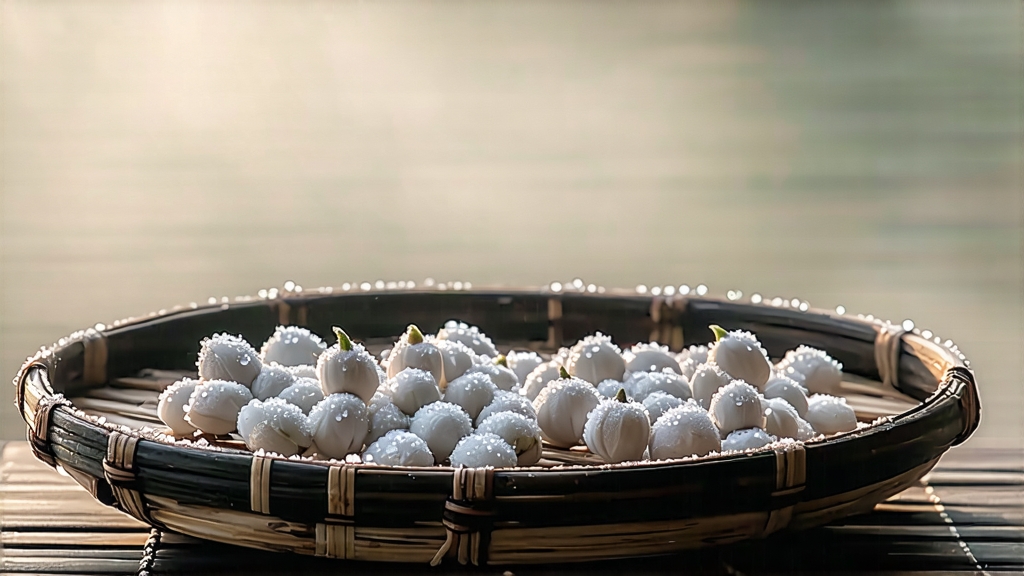
Among the six great families of Chinese tea, white tea is the quietest child, and within that hush Bai Hao Yin Zhen—literally “White Hair Silver Needle”—is the whisper you lean closer to hear. First recorded in the 1796 Daoguang era gazette of Fuding county, the tea was originally a tribute reserved for the imperial pharmacy, praised for its “cooling blood and brightening eyes.” Foreign merchants sailing out of Fuzhou’s treaty port in the 1850s nicknamed it “Silver Tips,” paying twice the price of black teas because the needle-shaped buds looked like miniature scepters of jade. Today it remains the most coveted grade of white tea, plucked only between mid-March and early April when the spring mist lingers long enough to silver the leaf hairs without wetting them.
The geography is inseparable from the taste. Fuding lies on the northeastern horn of Fujian, where the warm East China Sea current meets the Wuyi foothills. Night temperatures drop to 9 °C while daytime peaks barely touch 20 °C, slowing photosynthesis and stacking amino acids—especially L-theanine—inside the buds. Two cultivars dominate: Fuding Da Bai (Big White) and the rarer Fuding Da Hao (Big Hair), the latter bearing 30 % more pubescence, a genetic extravagance that translates into the tea’s signature “white down” aroma reminiscent of fresh wheatgrass and mountain orchid.
Plucking is an exercise in restraint. Only the unopened bud, still sheathed in two tiny fish-scale leaves, is taken, ideally before nine o’clock when dew is evaporating but the sun is still oblique. A skilled picker can gather 600 grams of fresh buds per hour; it takes 30 000 of them—an entire day’s work for five people—to yield a single 500 g tin. The buds must never be squeezed; they are laid into shallow bamboo baskets lined with hemp cloth, then carried downhill to the withering yard within two hours to prevent “red tail,” the enzymatic browning that would disqualify them from Silver Needle status.
Withering is where white tea earns its color, or lack thereof. Unlike green tea that kills green enzymes with dry heat, white tea is coaxed into surrendering moisture under nothing more than air, time, and the intuition of the master. Traditionally this happens in a sun-warmed brick courtyard called a “qing chang.” Buds are spread two centimeters thick on water-hyacinth mats, turned every twenty minutes for six hours, then moved indoors to continue overnight at 26 °C and 65 % humidity. Modern climate-controlled tunnels shorten the process to 36 hours, but connoisseurs still swear by the old method, claiming the sun’s ultraviolet spectrum catalyzes a mild oxidation that amplifies honey notes. Either way, the goal is 8–9 % residual moisture, at which point the bud’s surface down turns silvery-white while the inner tip remains a muted jade, like moonlight on bamboo.
No rolling, no roasting, no twisting—just a final desiccation at 80 °C for fifteen minutes to fix the down and drop moisture to 5 %. The finished tea looks like a cache of miniature spears: straight, uniform, 25–30 mm long, covered in a fuzz so dense it feels velvety when poured into a porcelain gaiwan. The dry aroma is subtle, almost shy, but place the lid over warmed leaf for thirty seconds and you release a perfume of fresh alfalfa, rain-soaked limestone, and a fleeting suggestion of ripe cantaloupe.
Water is the silent ingredient. Silver Needle deserves low-mineral spring water around 75 °C; anything harder mutes the velvety texture, anything hotter scalds the down and coaxes harsh tannins. A 120 ml gaiwan accepts 3 g of leaf—roughly forty buds. The first infusion, 45 seconds, yields a liquor the palest champagne, almost transparent at the rim. Sip with the front of the tongue and you meet a texture like chilled almond milk, followed by a cooling sensation that migrates to the throat, a phenomenon Chinese drinkers call “sheng jin,” the birth of fluids. The second infusion, 20 seconds longer, adds a note of sweet cucumber peel; by the third, a whisper of lychee arrives, lingering for minutes in the empty cup whose内壁 now smells of warm pine nuts.
Western brewers can replicate the experience with a 400 ml glass teapot and 5 g of leaf at